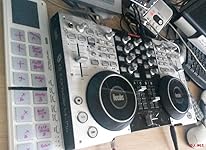




Ready to go? Add this product to your cart and select a plan during checkout. Payment plans are offered through our trusted finance partners Klarna, PayTomorrow, Affirm, Afterpay, Apple Pay, and PayPal. No-credit-needed leasing options through Acima may also be available at checkout.
Learn more about financing & leasing here.
30-day refund/replacement
To qualify for a full refund, items must be returned in their original, unused condition. If an item is returned in a used, damaged, or materially different state, you may be granted a partial refund.
To initiate a return, please visit our Returns Center.
View our full returns policy here.
Color: Black
Features
Brand: Korg
Number of Keys: 1
Connectivity Technology: USB
Special Feature: Portable
Model Name: NANOPAD2BK
Item Weight: 12.7 ounces
Product Dimensions: 14.6 x 1.6 x 3.7 inches
Country of Origin: Japan
Item model number: NANOPAD2BK
Is Discontinued By Manufacturer: No
Date First Available: April 25, 2011
Color Name: Black
Compatible Devices: Laptop
Connector Type: USB
Hardware Interface: USB
Supported Software: Ableton Live, Avid Pro Tools, FL Studio
Material Type: Plastic
Musical Style: Electronic
Instrument Key: Any
Number of Keyboard Keys: 1
Mixer Channel Quantity: 16
Hardware Platform: x86_64
Voltage: 9 Volts (AC)

